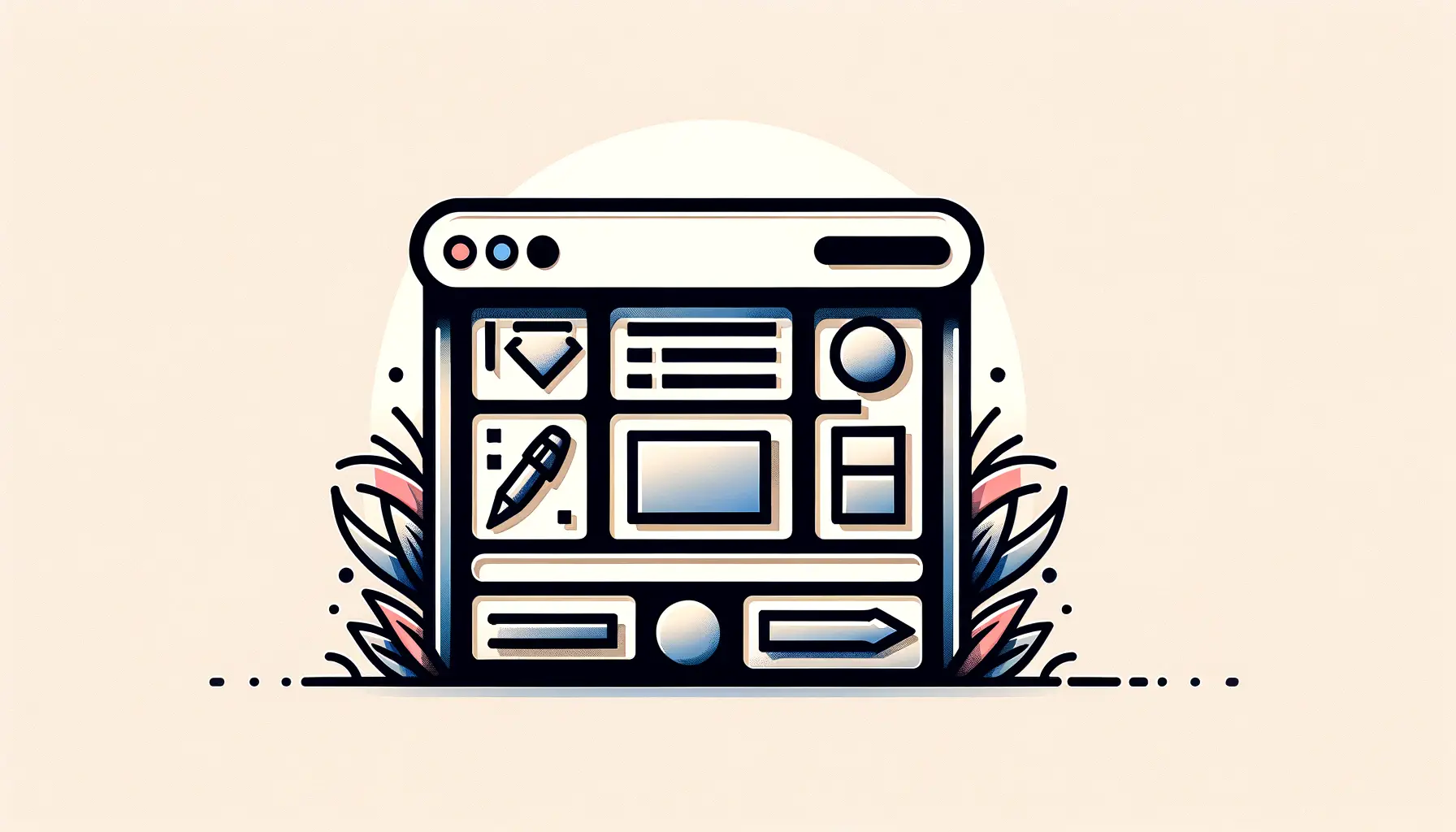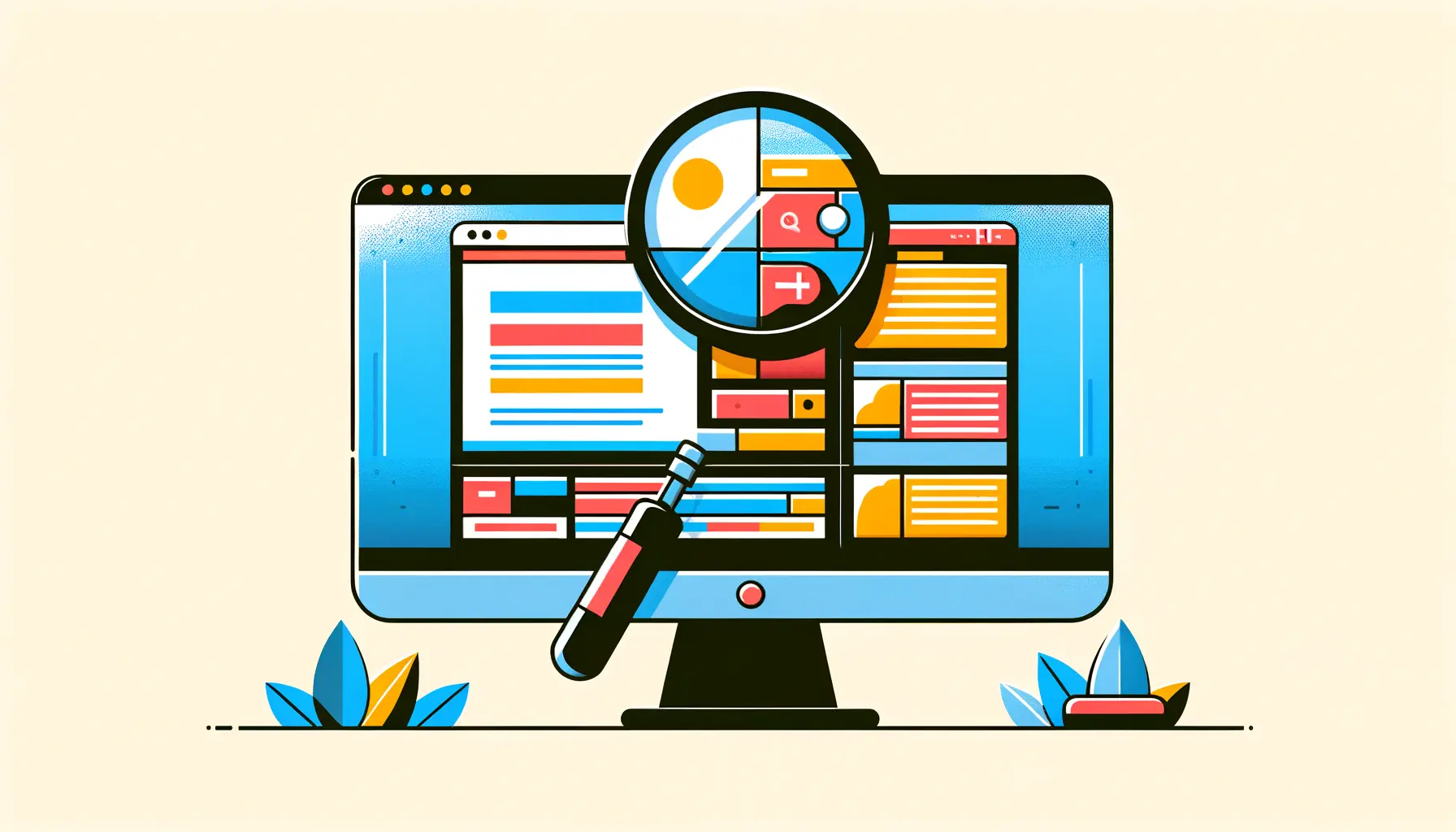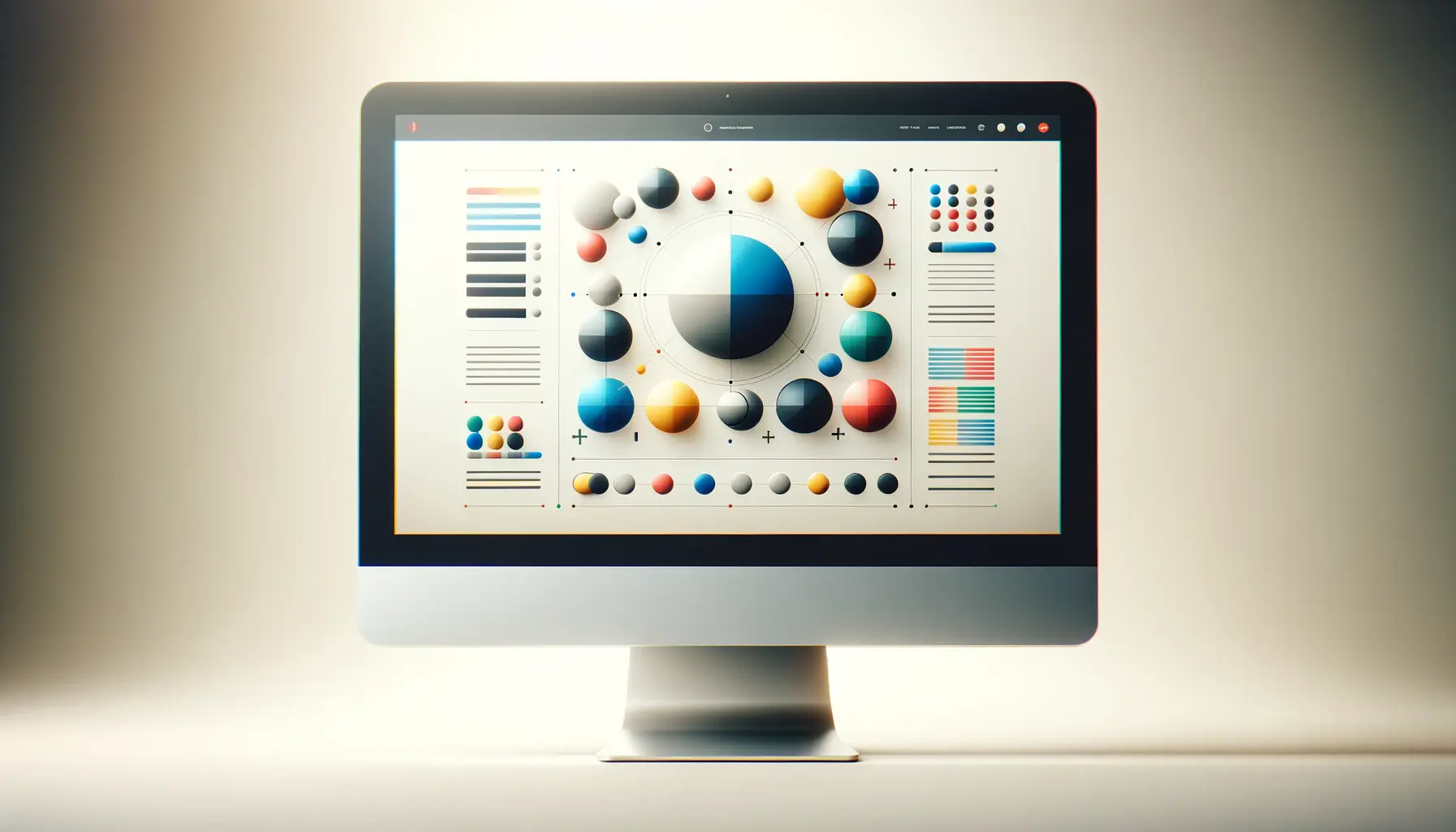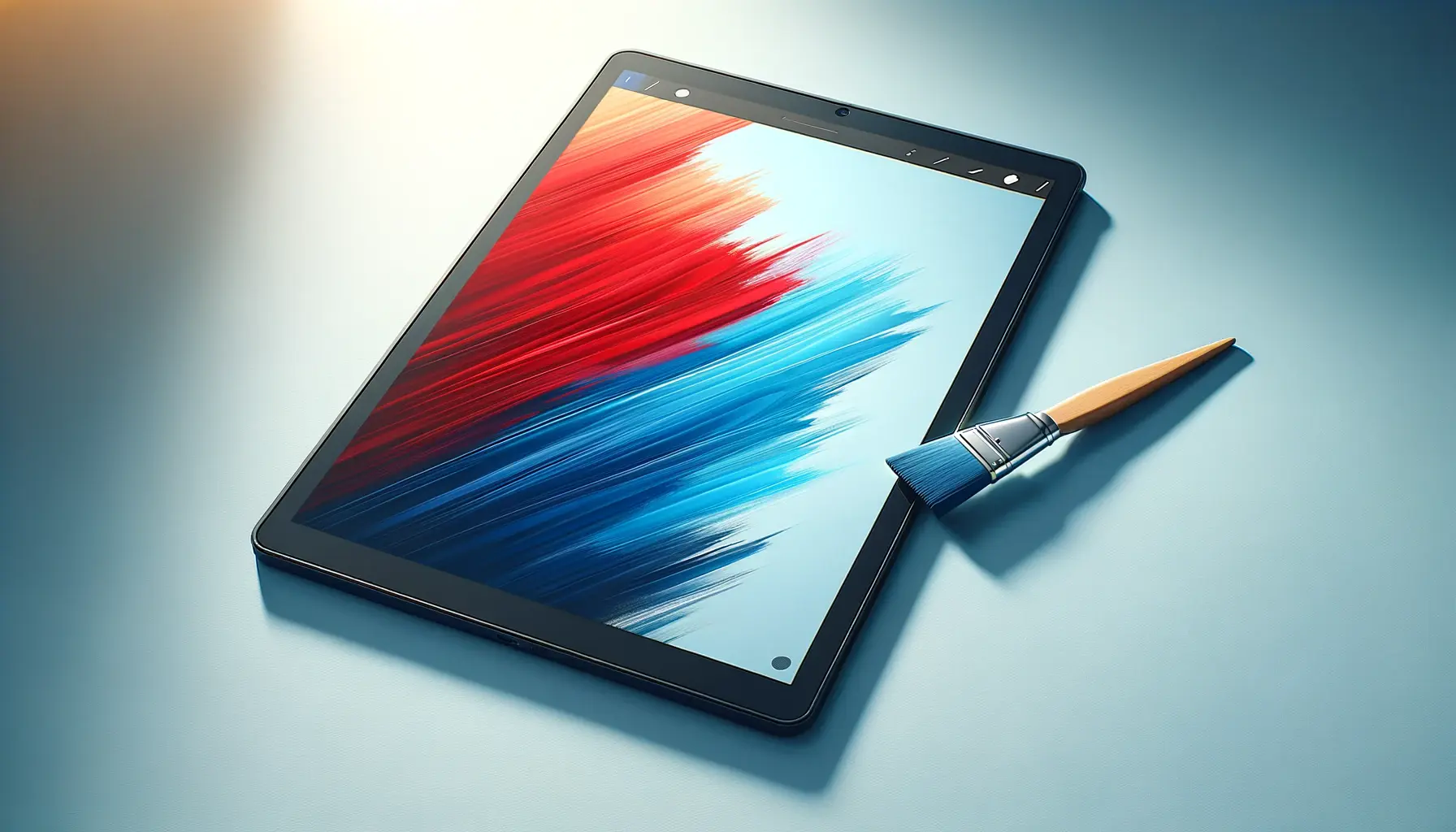The essence of typography in web design cannot be overstated.
It is the backbone of communication in the digital realm, serving not just as a vehicle for conveying messages but also as a critical tool in branding.
Typography, the art of arranging type, impacts how information is received and perceived by the audience.
It goes beyond the choice of fonts; it encompasses the arrangement, color, and size of letters, influencing the overall aesthetics and functionality of web design.
This intricate dance between form and function plays a pivotal role in branding, as it helps establish a brand’s voice and personality.
In the digital age, where countless brands vie for attention, the strategic use of typography can set a brand apart.
It’s not just about being seen; it’s about being remembered.
Effective typography enhances brand recognition, evokes emotions, and builds trust with the audience.
By carefully selecting and applying typefaces that align with their brand identity, companies can create a memorable online presence that resonates with their target audience.
This article delves into the significance of typography in web design branding, exploring its impact on user experience, brand perception, and ultimately, business success.
- The Role of Typography in User Experience
- Enhancing Brand Identity Through Typography
- Typography’s Impact on Emotion and Connection
- Typography and Visual Hierarchy in Web Design
- SEO and Typography: Enhancing Discoverability
- Adapting Typography for Global Audiences
- Future Trends in Typography and Web Design
- Embracing the Power of Typography in Web Design Branding
- Typography in Web Design: FAQs
The Role of Typography in User Experience
User experience (UX) is paramount in web design, determining how easily and pleasantly users can interact with a website.
Typography plays a crucial role in this regard, affecting readability, accessibility, and the overall user journey.
A well-designed typographic layout not only makes content more legible but also guides users through the website, highlighting key information and facilitating navigation.
The choice of typefaces, their size, spacing, and color, all contribute to creating an intuitive and enjoyable user experience.
Moreover, typography can influence the mood and tone of a website, subtly shaping users’ perceptions and emotions.
For instance, a serif font might convey tradition and reliability, while a sans-serif font could suggest modernity and approachability.
By aligning typographic choices with the brand’s personality, designers can create a cohesive and immersive experience that strengthens brand identity and fosters user engagement.
Typography and Readability
At the heart of typography’s impact on UX is readability.
Text that is difficult to read due to poor font choice, inadequate spacing, or low contrast can frustrate users and drive them away.
Conversely, text that is easy on the eyes encourages users to spend more time on the site, absorbing the content and engaging with the brand.
Designers must balance aesthetic appeal with functionality, choosing typefaces and layout strategies that enhance readability across devices and screen sizes.
Strategies such as using a limited number of font families, employing clear hierarchies, and ensuring sufficient contrast between text and background are essential for creating readable and accessible web content.
These practices not only improve the user experience but also contribute to SEO, as search engines favor websites that provide a good user experience.
Typography is not just about making words look attractive; it’s about enhancing communication and interaction in the digital space.
Enhancing Brand Identity Through Typography
Typography is a powerful tool in the arsenal of brand identity.
It has the unique ability to convey brand values, personality, and tone of voice without saying a word.
The fonts and typographic styles a brand chooses can tell a story about who they are and what they stand for, making typography an essential element of brand strategy.
When users visit a website, they interact with the brand through content.
How that content is presented—through the choice of typeface, size, color, and layout—can significantly affect their perception of the brand.
Consistent use of typography across all brand touchpoints reinforces brand identity, creating a strong, recognizable presence that can enhance brand loyalty and trust.
Key Components of Typographic Branding
- Font Selection: The choice of font is the most visible aspect of typographic branding. Each font has its own personality and emotional impact, which should align with the brand’s identity.
- Color and Contrast: Colors play a crucial role in typography by affecting readability and evoking emotions. The right contrast between text and background enhances readability and directs attention.
- Consistency: Consistent use of typography across all platforms and mediums strengthens brand recognition and fosters a cohesive brand image.
- Hierarchy and Layout: Effective typographic hierarchy and layout guide the user’s attention to the most important information, improving the user experience and reinforcing the brand message.
By carefully selecting and applying these components, brands can create a distinctive typographic identity that resonates with their audience.
This identity helps differentiate them from competitors and builds a visual language that communicates their unique values and personality.
Moreover, typography can adapt to various contexts and platforms, from websites to mobile apps to print materials, providing a flexible yet consistent tool for brand expression.
This adaptability is crucial in today’s multi-platform world, where users expect a seamless brand experience across all touchpoints.
A well-crafted typographic identity is not just about aesthetics; it’s a strategic tool that can enhance brand perception and engagement.
Typography’s Impact on Emotion and Connection
Typography has the profound ability to evoke emotions and connect with users on a psychological level.
The choice of typeface, size, color, and arrangement can all influence how a message is received and the feelings it elicits.
This emotional impact of typography is a powerful tool for brands to engage with their audience, creating a memorable experience that fosters emotional connections.
Emotional design is an essential aspect of creating engaging user experiences.
By understanding the emotional connotations of different typefaces and typographic treatments, designers can craft web experiences that resonate deeply with users.
This resonance can turn casual visitors into loyal customers, as they feel a stronger connection to the brand’s personality and values.
Creating Emotional Impact with Typography
- Choosing the Right Typeface: Different typefaces can convey different moods and personalities. For example, serif fonts often evoke a sense of tradition and reliability, while sans-serif fonts are perceived as modern and approachable.
- Color Psychology: Colors have a significant impact on our emotions. Typography that utilizes color effectively can enhance the emotional tone of the message, such as using warm colors for excitement or cool colors for calmness.
- Typographic Tone: The weight, spacing, and style of type can all contribute to the tone of the message. A light, airy font might feel casual and friendly, while a bold, tight font could convey strength and urgency.
The emotional impact of typography extends beyond the aesthetic appeal, influencing how users perceive and interact with content.
A positive emotional response can enhance user engagement, increase brand loyalty, and even influence decision-making processes.
Brands that leverage typography to create meaningful emotional connections can differentiate themselves in a crowded marketplace and build lasting relationships with their audience.
Furthermore, typography that aligns with the emotional tone of the content can reinforce the message and make it more impactful.
This alignment between form and content is crucial for effective communication, ensuring that the visual presentation supports and enhances the message rather than detracting from it.
The right typography can transform text from mere information to an emotionally engaging experience, deepening the user’s connection to the brand.
Typography and Visual Hierarchy in Web Design
Visual hierarchy is a fundamental concept in web design, guiding users’ attention to different elements on a page according to their importance.
Typography is a key player in establishing this hierarchy, using size, weight, color, and placement to differentiate and prioritize content.
A well-executed typographic hierarchy makes websites more navigable and content more digestible, significantly improving the user experience.
Effective visual hierarchy through typography not only organizes content but also enhances readability and scannability.
Users often skim web pages, looking for relevant information.
By designing a clear hierarchy, designers can help users find what they need quickly and easily, reducing frustration and increasing satisfaction.
Implementing Typographic Hierarchy
- Size: Larger fonts are naturally more attention-grabbing and are often used for headings and subheadings to denote their importance over body text.
- Weight: Bold or heavier font weights can indicate emphasis, drawing the eye to key information or calls to action.
- Color: Using color strategically can highlight important elements or indicate interactive features like links.
- Spacing: Adequate spacing between letters (kerning), words, and lines (leading) improves readability and helps distinguish between different text elements.
By carefully considering these aspects, designers can create a visual flow that leads users through the content in a logical and intuitive manner.
This not only improves the aesthetics of the site but also its functionality, making information easy to find and understand.
The ultimate goal is to create a seamless experience that guides users from their initial interest to the desired action, whether that’s reading an article, signing up for a newsletter, or making a purchase.
Moreover, a consistent typographic hierarchy across a website reinforces brand identity, creating a cohesive look and feel that users will recognize and remember.
This consistency is key to building trust and credibility with the audience, as it demonstrates attention to detail and a commitment to providing a positive user experience.
A strategic typographic hierarchy is essential for effective web design, facilitating user navigation and enhancing content engagement.
SEO and Typography: Enhancing Discoverability
While typography’s primary role in web design is to enhance readability and user experience, it also plays a crucial role in search engine optimization (SEO).
The way content is structured and presented can significantly impact a website’s visibility on search engine results pages (SERPs).
Proper use of typographic elements like headings, subheadings, and body text can help search engines better understand and index content, improving a site’s SEO performance.
Search engines use algorithms to crawl web pages, looking for clues about the content’s relevance and quality.
Typographic hierarchy, through the strategic use of HTML tags (H1, H2, H3, etc.), helps signal the importance of various content pieces, making it easier for search engines to determine the page’s focus.
This clarity not only benefits the user experience but also enhances the content’s discoverability online.
Typography’s Role in SEO
- Headings and Subheadings: Using headings correctly (H1 for the main title, H2 for main sections, H3 for subsections, etc.) helps structure content in a way that’s easily understood by search engines, improving indexing and ranking.
- Keyword Integration: Incorporating keywords naturally within typographic elements can boost SEO. However, it’s crucial to maintain readability and avoid keyword stuffing.
- Mobile Optimization: With the increasing importance of mobile-first indexing, typography must ensure readability across devices. Responsive design and legible font sizes contribute to better SEO rankings.
- Load Times: Typography can affect page load times, especially when using custom fonts. Optimized fonts and efficient loading techniques can improve site speed, a factor in Google’s ranking algorithms.
By aligning typographic design with SEO best practices, websites can achieve higher rankings, driving more organic traffic and enhancing visibility.
This synergy between typography and SEO underscores the importance of a holistic approach to web design, where aesthetics and functionality work hand in hand to create an effective online presence.
Furthermore, engaging and well-presented content encourages users to spend more time on the site, reducing bounce rates and signaling to search engines that the website offers valuable information.
This user engagement is a critical factor in SEO, highlighting the indirect impact of typography on a site’s search performance.
Effective typography enhances both user experience and SEO, making it a key component of successful web design.
Adapting Typography for Global Audiences
In today’s globalized digital world, websites often cater to international audiences, making the adaptability of typography to different languages and cultures a crucial aspect of web design.
Typography that resonates with a wide range of users can enhance user experience, engagement, and accessibility on a global scale.
Understanding the nuances of typographic preferences across cultures is essential for creating inclusive and effective web designs.
Designing for a global audience requires a careful balance between maintaining brand identity and adapting to local preferences and script requirements.
This might involve selecting typefaces that support various character sets or adjusting layout and spacing to accommodate different writing systems.
The goal is to ensure that content is equally legible and aesthetically pleasing to all users, regardless of their cultural background.
Cultural Considerations in Typography
- Font Selection: Choose fonts that support the character sets of all target languages, ensuring that text is displayed correctly and without errors.
- Readability: Consider the readability norms of different cultures, such as font size preferences and line spacing, to enhance the reading experience for a diverse audience.
- Visual Harmony: Aim for a visual style that is culturally neutral or adaptable, using typography that aligns with the brand’s identity while being sensitive to cultural differences.
- Localization: Beyond translation, localization involves adjusting typographic elements to reflect local customs and preferences, enhancing the website’s relevance and appeal to international users.
Adapting typography for global audiences not only improves accessibility and user satisfaction but also contributes to a brand’s international image and reach.
By embracing the diversity of global users in their typographic choices, brands can create more inclusive and engaging online experiences that resonate across borders.
This approach also highlights the importance of testing and feedback in the design process.
Engaging with users from different cultural backgrounds can provide valuable insights into how typography affects their experience and perception of the website, leading to more informed and effective design decisions.
Embracing typographic diversity is key to creating web experiences that are truly global, fostering inclusivity and connection among diverse audiences.
Future Trends in Typography and Web Design
The landscape of web design and typography is ever-evolving, with new trends and technologies shaping the way we create and interact with digital content.
Staying ahead of these trends is crucial for designers and brands alike, as they offer fresh ways to engage users and stand out in a crowded digital space.
As we look to the future, several key trends in typography and web design are emerging, promising to redefine our online experiences.
From the integration of variable fonts to the adoption of more inclusive and accessible design practices, the future of typography in web design is vibrant and dynamic.
These trends not only reflect technological advancements but also a deeper understanding of user needs and preferences, driving a more personalized and user-centric approach to web design.
Emerging Trends in Typography
- Variable Fonts: These fonts allow for customizable styles within a single font file, offering greater flexibility in typography without the need for multiple font files. This can improve loading times and allow for creative typographic expression.
- Inclusive and Accessible Design: There’s a growing focus on making web content accessible to everyone, including people with disabilities. This includes typographic choices that enhance readability and navigability for users with visual impairments.
- Dynamic and Interactive Typography: With advancements in web technologies, typography is becoming more interactive and dynamic, allowing for animations, transitions, and user-triggered changes that enhance engagement.
- Environmental Typography: This trend involves designing typography that adapts to user context and environment, such as light conditions, device usage, and even emotional states, offering a more personalized user experience.
As these trends continue to develop, they will shape the future of web design, offering new opportunities for creative expression and user engagement.
By embracing these trends, designers can create more effective, engaging, and memorable web experiences that resonate with users on a deeper level.
The future of typography in web design is not just about aesthetics; it’s about leveraging technology and design principles to create content that is more accessible, engaging, and effective.
As we move forward, the role of typography in shaping user experiences and brand identities will only grow, underscoring its importance in the digital age.
Staying abreast of typographic trends is essential for creating future-proof web designs that meet evolving user expectations and technological capabilities.
Embracing the Power of Typography in Web Design Branding
The journey through the nuances of typography in web design branding reveals its undeniable influence on user experience, brand identity, emotional connection, and beyond.
As we’ve explored, typography is not merely about selecting attractive fonts; it’s a strategic tool that enhances communication, engages audiences, and sets the foundation for a brand’s digital presence.
The thoughtful application of typography principles can elevate a brand, distinguishing it in a competitive landscape and fostering a deeper connection with its audience.
The Strategic Role of Typography
Typography’s role extends beyond the aesthetic to encompass strategic brand positioning and user engagement.
It’s a critical element in creating a cohesive brand identity, ensuring content is not only readable but also resonant with the intended audience.
The choice of typeface, color, and layout speaks volumes about a brand’s personality and values, making typography a key player in the branding playbook.
Future-Proofing with Typography
As we look ahead, the evolution of typography in web design continues to promise innovative ways to capture user attention and deliver memorable experiences.
The adoption of variable fonts, emphasis on accessibility, and exploration of dynamic and interactive typography are just the beginning.
These trends underscore the importance of staying informed and adaptable, ensuring that web design practices remain at the forefront of technology and user expectations.
- Variable fonts offer flexibility and efficiency, paving the way for more creative and responsive design solutions.
- Accessible and inclusive design practices ensure that websites cater to a broader audience, emphasizing the importance of universal design principles.
- Interactive and dynamic typography engages users in new and exciting ways, enhancing the overall user experience and encouraging longer engagement.
In conclusion, the strategic integration of typography in web design branding is paramount for creating compelling digital experiences.
It’s a blend of art and science, requiring a deep understanding of user psychology, design principles, and brand strategy.
As the digital landscape evolves, so too will the approaches to typography, offering endless possibilities for innovation and creativity.
By embracing these changes and recognizing the profound impact of typography, brands can create meaningful connections, drive engagement, and secure their place in the digital future.
Quality web design is key for a great website! Check out our service page to partner with an expert web design agency.
Typography in Web Design: FAQs
Explore common questions about the role and impact of typography in web design, offering insights for designers and brands alike.
Typography enhances readability, user experience, and brand identity, making it crucial for effective web design.
Good typography improves legibility, guides users through content, and facilitates a better understanding of the information.
Yes, the choice of fonts, size, and color can evoke emotions, setting the tone and atmosphere of a website.
Select fonts that reflect your brand’s personality and ensure readability across devices and screen sizes.
Limiting to 2-3 font types is best to maintain a clean, cohesive, and professional appearance.
Typography influences SEO by improving user engagement, readability, and the overall user experience, which are ranking factors.
Use legible font sizes, sufficient contrast, and clear hierarchies to ensure content is accessible to users with disabilities.
Future trends include variable fonts, inclusive design, and dynamic typography that adapts to user interactions and contexts.











